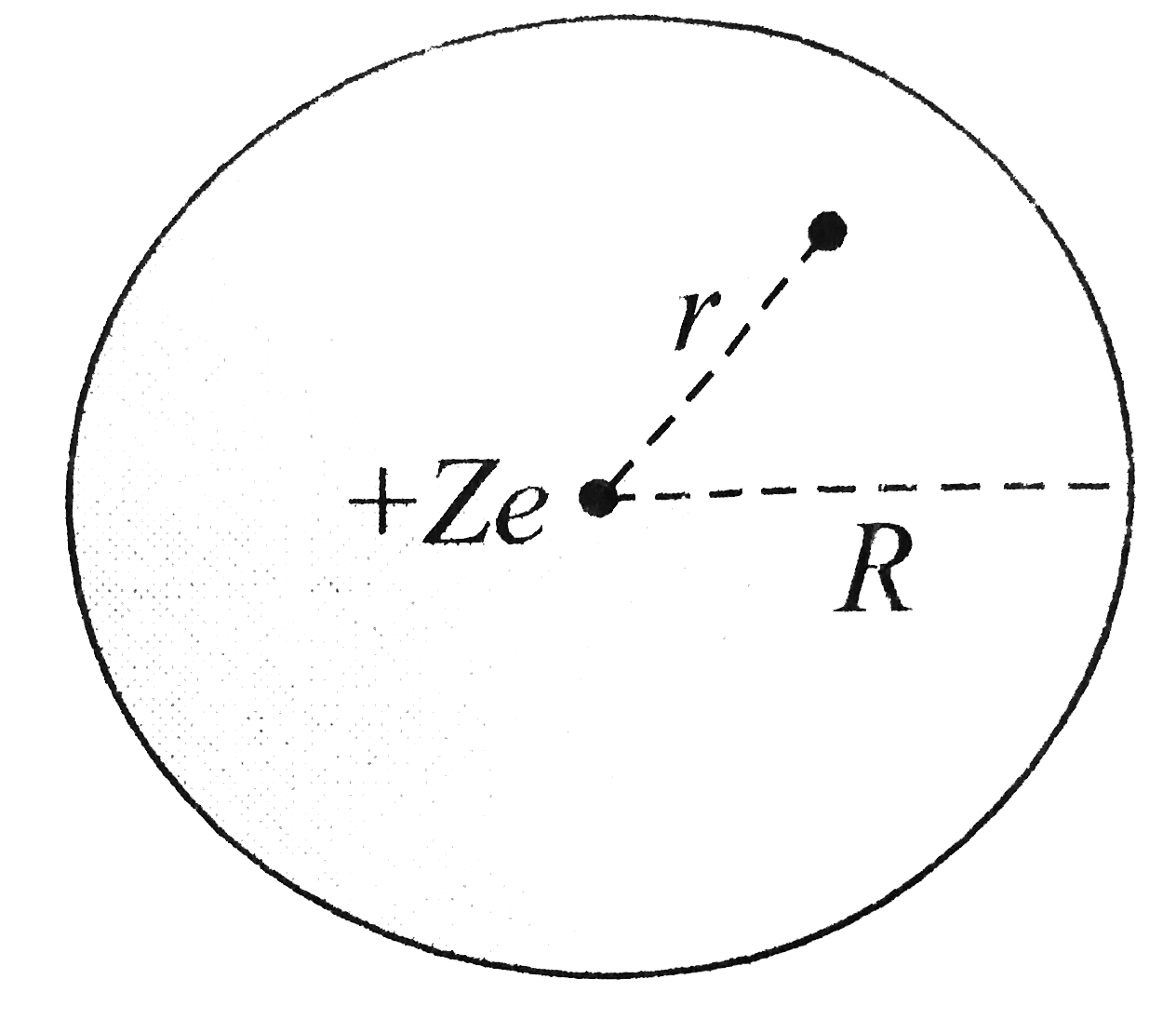An atom was earlier assumed to be sphere of radius a having a positively charged point nucleus of charge +Ze at its centre . This nucleus was believed to be surrounded by a uniform desity of negative charge that made the atom neutral as a whole.
Use this theorem to find the electric field of this atom at a distance r(r>a) from the centre of the atom.
Let ρ be the uniform density of negative charge . We then have
4πa3ρ3=Ze
∴ρ=(3Ze4πa3)
Taking a sphere of radius r (centre at the nucleus) as the Gaussian surface , we have
E(r)×4πr2=qε0 .... (i)
where , q is the net charge enclosed by the Gaussian surface . Now
q=(+Ze)+(−ρ.4πr33)
=Ze−Ze(r3a3)
=Ze(1−r3a3)
Substituting this value of a , in eq . (i)
E(r)=Ze4πε0r2(1−r3a3)
=Ze4πε0(1r2−ra3)
Topper's Solved these Questions
- ELECTRIC CHARGES & FIELDSBOOK - OSWAAL PUBLICATIONCHAPTER - ELECTRIC CHARGES & FIELDSEXERCISE - (TOPIC -2)Long Answer Type Questions
4 Videos
- DUAL NATURE OF RADIATION AND MATTERBOOK - OSWAAL PUBLICATIONCHAPTER - DUAL NATURE OF RADIATION AND MATTEREXERCISE - TOPIC-2 DE-BROGLIE RELATION (NUMERICAL PROBLEMS)
7 Videos
- ELECTROMAGNETIC INDUCTION BOOK - OSWAAL PUBLICATIONCHAPTER - ELECTROMAGNETIC INDUCTION EXERCISE - TOPIC-2 (Eddy Current, Self & Mutual Inductance) (Numerical Problems)
3 Videos
Similar Questions
Knowledge Check
An early model for an atom considered to have a positively charged point nucleus of charge Ze surrounded by a uniform density of negative charge up to a radius R. The atom as a whole is neutral. For this model, what is the electric field a distance r from the nucleus, where r>R ?
A14πε0Zer2B14πε0ZeR2C14πε0Zer2−R2D0A hallow metal sphere of radius R is uniformly charged. The electric field due to the sphere at a distance r from the centre:
Adecreases as r increases for r<R and r>RBincreases as r increases for r<R and r>RCzero as r increases for r<R, decreases as r increases for r>RDzero as r increases for r<R, increases for r>RA hallow metal sphere of radius R is uniformly charged. The electric field due to the sphere at a distance r from the centre:
AIncreases as r increases for r<Rand for r>RBZero as r increases for r<R, decreases as r increases for r>RCZero as r increases for r<R , increases as r increases for r>RDDecreases as r increases for r<Rand for r>R
According to early model of an atom,the atom is considered it to have a positively charged point nucleus of charge Ze surrounded by a uniform density of negative charge up to a radius R. The atom as a whole is neutral. The electric field at a distancer from the nucleus is (r<R)

View SolutionAn early model for an atom considered it to have a positivelly charged point nucleus of charge +Ze surrounded by a uniform density of negative charge up to a radius R. The atom as whole is neutral. For this model , what is the electric field at a distance r from the nucleus when
r<R
r=R ?Use Gauss's theorem
View SolutionAn early model for an atom considered it to have a positively charged point nucleus of charge Ze, surrounded by a uniform density of negative charge upto a radius R. The atom as a whole is neutral. The electric field at a distance r from the nucleus is (r < R)

View SolutionAccording to early model of an atom,the atom is considered it to have a positively charged point nucleus of charge Ze surrounded by a uniform density of negative charge up to a radius R. The atom as a whole is neutral. The electric field at a distancer from the nucleus is (r<R)

View SolutionA hallow metal sphere of radius R is uniformly charged. The electric field due to the sphere at a distance r from the centre:
View Solution
